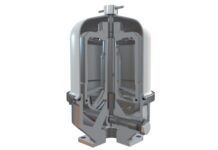
Workflow automation is an essential part of running a successful produce business. Automation can help streamline processes and make them more efficient, increasing productivity and raising profit margins.
Technologies that automate daily tasks like ordering supplies, scheduling delivery times, or tracking customer orders can save time and money while optimizing workflows.
In this article, we’ll discuss different types of workflow automation. From robotics and machine learning to automation software and supply chain management, we’ll cover everything you need to know about how automation can help your produce business thrive.
Keep reading to learn more.
Types of workflow automation

Workflow automation is becoming increasingly crucial for produce businesses of all sizes. Whether you’re a small family-owned business or a large enterprise, automating specific processes can help keep your business running smoothly. Many different types of workflow automation are available, each with its own benefits and drawbacks.
Here are five types of workflow automation that can help improve operations.
1. Accounting software
Accounting software can be used by produce businesses to help track their finances. This type of automation makes it easier to keep track of income and expenses, as well as manage payroll and taxes.
It can also provide valuable insight into a business’ financial health, allowing for better decision-making regarding how to allocate resources.
When it comes to accounting software for your produce business, look for platforms like Silo that are user-friendly, consolidate all expenses, and offer integrations with other programs to enhance your experience.
2. Robotics
Robotics can be used to automate a wide variety of tasks, such as sorting and packing produce. This type of automation is cost-effective and efficient, allowing businesses to reduce labor costs while maintaining high-quality products. Robotics can also help speed up processes and reduce the risk of accidents.
3. Machine learning
Machine learning allows computers to learn from data and improve performance over time.
This type of automation is beneficial for produce businesses that need to process large amounts of information quickly, such as sorting or analyzing yields. Businesses can quickly and accurately process data using machine learning to make informed decisions.
4. RFID (Radio Frequency Identification) technology
RFID technology is a passive identification system that allows for the automated tracking of produce from farm to market.
By using RFID tags, businesses can track their inventory in real time, helping ensure that the right amount of produce is being delivered to the right place at the right time.
5. Optimization software
Optimization software can help with better pricing and production decision-making, allowing businesses to analyze their data and adjust their processes accordingly to maximize efficiency and profit.
This type of automation is especially beneficial for larger produce businesses that need to manage large amounts of data and make quick decisions to remain competitive.
The benefits of workflow automation for produce businesses

Workflow automation provides numerous benefits to produce businesses, allowing them to increase efficiency and reduce overall costs.
Below are some of the primary benefits of workflow automation for produce businesses.
Reduced operational costs
One of the most significant advantages of workflow automation is its ability to reduce operational costs. Automating specific processes can eliminate manual labor and decrease overhead expenses.
By automating order management, procurement, and inventory tracking, produce businesses can significantly cut back on operational costs and maximize profits.
Improved customer service
Automation can also improve customer service by streamlining processes and reducing wait times.
Automating customer service inquiries and product delivery tracking can help produce businesses deliver a better customer experience by providing them with up-to-date information on the status of their orders.
Increased productivity
Workflow automation can increase productivity as well by reducing the amount of time and effort required to complete specific tasks, letting businesses save on time and resources.
Improved accuracy
Automation eliminates human error that might otherwise cost time or money.
Although workflow automation may require a significant upfront investment in technology and software, the long-term benefits it can provide to produce businesses are well worth the effort.
The disadvantages of workflow automation for produce businesses

Even though automation can increase efficiency and reduce costs, there are a few disadvantages as well.
Downtime
Particularly with things like robotics, automation can lead to potential downtime due to technical issues or malfunctions.
Upfront costs
For comprehensive and rather complicated systems, there can also be large upfront costs in terms of training and the technology itself, which could be difficult for small businesses with limited resources to afford.
Maintenance
Some automated systems like robotics may require frequent maintenance and upgrades.
Conclusion
Despite the few drawbacks, workflow automation is an invaluable tool for produce businesses looking to reduce operational costs, improve customer service, and increase efficiency.
There are a variety of types of automation that you can use depending on the needs of your business. We hope that this article has helped you to understand the different options available to you and given you some ideas for how you might automate your own produce business.








